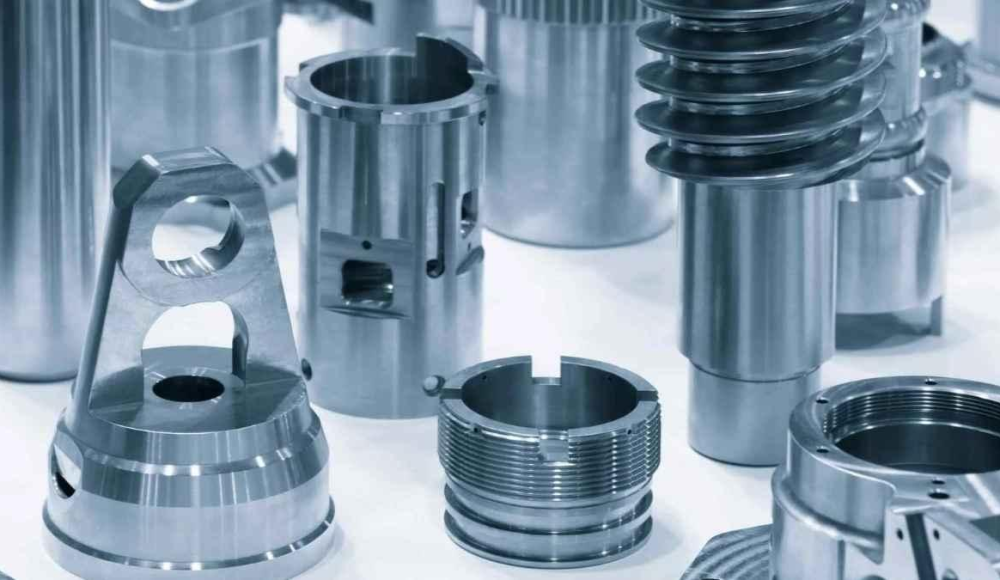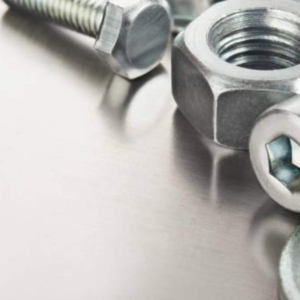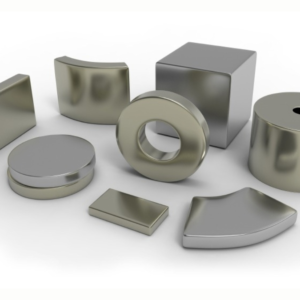El recocido es un proceso de tratamiento térmico.. Implica calentar y enfriar cuidadosamente el metal para cambiar sus propiedades.. El motivo es desarrollar características positivas y minimizar los atributos negativos., simultáneamente. Además, El proceso de recocido ayuda a mejorar las características mecánicas de ciertos metales, y las aleaciones se alteran para ser más adecuadas para los usos requeridos.
Que es el recocido?
Recocido como un proceso de tratamiento térmico reduce la dureza de un material. También mejora la ductilidad y la dureza en diferentes aceros, hierro fundido, y otros aleaciones. El recocido implica calentar la pieza de trabajo por encima de su temperatura de recristalización. Esto facilita la formación de los nuevos granos y reorganiza los existentes simultáneamente.
El reordenamiento de grano libera tensiones internas y mejora las estructuras cristalinas. Estas mejoras son útiles en muchas aplicaciones.. La normalización suele verse como una actividad discreta.. Pero es un tipo típico de recocido.. en normalizar, Los metales se calientan y luego se dejan enfriar en el aire a temperatura ambiente, a diferencia de un horno controlado..
Cuando se usa el recocido?
El recocido hace que el acero sea más blando que cuando está templado.. Esta propiedad lo hace adecuado para productos que probablemente sufrirán muy poco estrés.. Varias aplicaciones para el recocido incluyen:
- Reversión del endurecimiento por trabajo: Esto ocurre después de operaciones mecánicas que reducen la dureza, como doblar o moler.. Por ejemplo, cuando el alambre se saca de un metal, La dureza del material y la tensión interna también aumentan.. El proceso de recocido puede restaurar el metal a una condición viable., y aumentar la ductilidad y maquinabilidad.
- Ablandamiento de la solidificación de soldadura: La soldadura a altas temperaturas da como resultado zonas afectadas por el calor (ZAT). Por lo general, se encuentra que estas zonas tienen mayor dureza y fragilidad., en comparación con el material base. Algunas de estas áreas son devueltas a sus propiedades mecánicas originales por el proceso de recocido.
- Desarrollo de conductividad eléctrica: El proceso puede mejorar las propiedades eléctricas de un metal, específicamente su conductividad.
- Eliminación de tensiones residuales: El trabajo en frío da como resultado la formación de nuevas tensiones que podrían conducir a la formación de grietas o distorsión. Estas tensiones se alivian mediante el recocido, lo que hace que las propiedades del material sean más uniformes y capaces de servir más tiempo.. Cuando estas tensiones internas se reducen mediante el recocido, El rendimiento y la funcionalidad operativa se mejoran.
El proceso de recocido
El proceso de recocido incluye tres etapas clave:
- Recovery Stage: Durante la etapa inicial, the metal is heated to approximately 200-400°C, depending on the material. Heating facilitates the rearrangement of dislocations in the crystal structure. This alleviates internal stress without undue alteration in the grain size. La conductividad eléctrica y la ductilidad pueden mejorarse como consecuencia.
- Recrystallization Stage: en esta etapa, there germinate new grains. El metal se mantiene a una temperatura particular durante una duración que conduce al nuevo crecimiento del grano en el reemplazo de los granos deformados. This process enhances the general ductility as well as the strength of the material.
- Grain Growth Stage: Durante la recristalización, si el metal se expone a altas temperaturas durante períodos más prolongados, incluso los nuevos granos comienzan a crecer.. Esta etapa puede causar un deterioro de la resistencia a medida que aumenta el tamaño del grano porque el material puede deformarse fácilmente.. El régimen temperatura-tiempo debe controlarse estrictamente para influir en el tamaño del grano y las propiedades mecánicas..
Pros y contras de recocido
Los componentes metálicos recocidos tienen algunas ventajas sobre los metálicos no recocidos.. Los beneficios comunes del proceso de recocido incluyen:
- Restauración de Propiedades Físicas: El calentamiento es bueno para los metales porque les devuelve sus propiedades, incluida la ductilidad.. El movimiento de las moléculas en la microestructura reduce el endurecimiento por trabajo y la fragilidad..
- Alivio de tensiones internas: Reducir el estrés interno en los componentes es un proceso que se logra mediante el recocido. Esto reduce en gran medida la posibilidad de tener grietas en el curso de las operaciones posteriores..
- Maquinabilidad mejorada: El alto grado de regularidad de la microestructura y el bajo nivel de tensiones internas conducen a una mejor maquinabilidad.. Esta cualidad facilita el mecanizado de algunas piezas..
- Corrección de dislocaciones: Algunas de las imperfecciones en la red cristalina se pueden liberar. Esta mejora puede mejorar las características eléctricas y magnéticas del metal a partes iguales..
- Control sobre la estructura del grano: Algunos de los procesos de recocido se pueden utilizar para controlar las estructuras de los granos.. La selección de la temperatura para las velocidades de calentamiento y enfriamiento también puede alterar la fase del grano y las propiedades físicas de un material..
Sin embargo, Se deben considerar varias desventajas junto con estos beneficios.:
- Proceso que requiere mucho tiempo: El proceso de recocido puede llevar mucho tiempo.. En algunos casos, especially if the materials and methods chosen entail slower cooling rates the curing may take more than 24 horas.
- Increased Costs: Other costs include equipment and labor costs. The housing of the components also increases overall costs due to the cost of heating and cooling the components.
Ejemplos de recocido: Componentes recocidos comúnmente
Several components frequently undergo annealing processes, incluido:
- Chapa de metal: Cold-rolled sheet metal is sometimes annealed to reduce work hardening. This brings back ductility that allows further operations such as bending, puñetazos, or cutting.
- Manufactured Components: Primavera, lavadoras, y las cuchillas de sierra son algunos de los productos que se someten a recocido después de la fabricación. This returns their physical properties and minimizes brittleness.
- Drawn Aluminum: Aluminum parts, formed by deep drawing, are advantageous when annealed. Este proceso ofrece protección contra el desgarro o el agrietamiento, especialmente durante las operaciones de formación extrema..
Recocido vs normalización: Diferencias clave
Estas son las distinciones clave entre el recocido y la normalización:
| Recocido | Normalizando |
| Los metales se enfrían lentamente dentro del horno. | Los metales se enfrían rápidamente en el aire ambiente. |
| La velocidad de enfriamiento es relativamente lenta. | La velocidad de enfriamiento es relativamente rápida. |
| Resulta en una mayor ductilidad. | Produce menor ductilidad. |
| Conduce a una dureza reducida, fortaleza, y dureza. | Mejora la dureza, fortaleza, y dureza. |
| Produce una estructura gruesa y menos uniforme de grano. | Produce una estructura de grano fina y uniforme. |
| Las tensiones internas son mínimas después del proceso. | Las tensiones internas son ligeramente más altas post-normalizantes. |
| Generalmente más costoso. | Típicamente más bajo en costo. |
| Aplicable a metales como el acero, aluminio, latón, y cobre. | Principalmente aplicado al acero inoxidable, aluminio, latón, y cobre. |
| Comúnmente utilizado para componentes mecánicos y eléctricos, así como artículos para el hogar. | A menudo utilizado en el automóvil, nuclear, y las industrias de la construcción. |
Conclusión
En conclusión, El recocido es uno de los procesos de tratamiento térmico más importantes que pueden mejorar el trabajo., fortaleza, y capacidades de servicio de los metales.. También ayuda a liberar tensiones internas., aumentar la ductilidad, y preparar materiales para tratamientos posteriores.. Por lo tanto, El recocido se utiliza en la mayoría de las industrias debido a su importancia.. Para garantizar que las propiedades del material se adquieran de la manera correcta., Los fabricantes deben comprender las diferentes etapas y tipos de recocido.. A medida que avanzan las industrias, La aplicación de tratamientos térmicos, incluido el recocido, experimentará un aumento en la demanda, lo que resultará en una producción eficiente..




1 pensamiento en “Recocido explicado: Definición, Proceso & Beneficios”